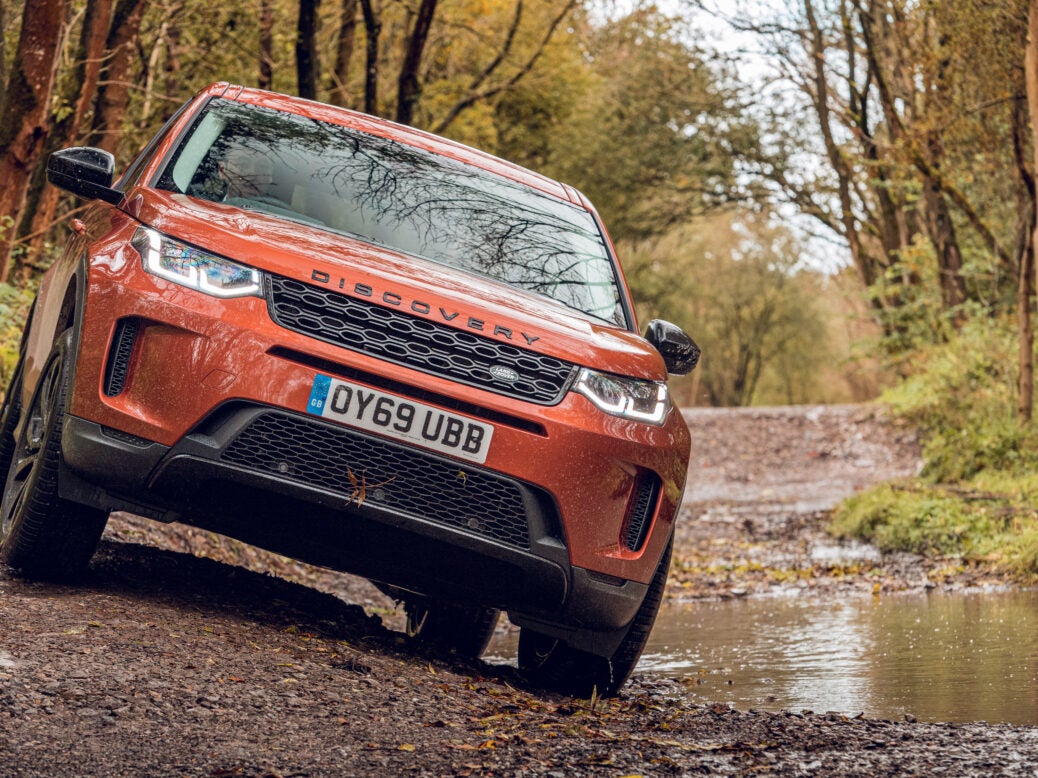
Land Rover has future-proofed the latest version of its best-selling Discovery Sport, writes Gareth Herincx
If you’re in need of a car that’s practical, easy to drive, seats seven, blends in anywhere and is capable of the most remarkable things off-road, then the new Land Rover Discovery Sport should be on your shortlist.
Originally launched in 2015, some 120,000 have found homes globally – 20 per cent in the UK.
Now Land Rover has treated the Discovery Sport to a mid-life facelift like no other. Not only has it had a refresh inside and out, but it’s now sitting on a brand new platform.
Shared with the new Range Rover Evoque, it will enable the launch of plug-in hybrid (PHEV) versions of both cars in the near future.
For now, Discovery Sport owners will have to make so with a mild hybrid system (MHEV) of which more later.

Frankly, the exterior changes are subtle to say the least. In fact, you’d struggle to notice any difference between this and the outgoing model other than refreshed rear light clusters and new bumpers. Or to put it another way, maybe the Gerry McGovern and his design team just go it so right the first time.
Anyway, it’s a different story inside where the Sport has inherited much of the latest Touch Pro Duo infotainment technology from the new Range Rover Evoque, which means fewer switches, a larger 10.25-inch touchscreen, 12-3-inch digital driver’s display and a stubby gear selector replacing the previous levitating rotary dial.
Other highlights include the Clearsight Rear View Mirror, which digitally transforms the mirror into an unobstructed rear view using a roof-fin mounted camera.
Autonomous Emergency Braking (AEB) and Lane Keep Assist are among the safety systems fitted.
Elsewhere, you can still specify a seven-seat layout if five aren’t enough, there’s a 40:20:40 split on the sliding second row. Legroom is improved and there’s extra storage throughout the cabin.
Available with a choice of 2.0-litre petrol and diesel engines of varying outputs (all with automatic transmission as standard, except for the lowest-powered diesel, which has a six-speed manual gearbox).
The entry-level diesel is also the only model in the range that doesn’t come with mild hybrid technology.
The system harvests energy normally lost during acceleration and stores it in a 48v battery under the floor, boosting power and reducing fuel consumption in the process.
The new Land Rover Discovery Sport is a real step-up when it comes to refinement and comfort too, shortening the gap between it and the Range Rover Evoque.
And like all cars proudly wearing the Land Rover Badge, it’s also capable of phenomenal feats off-road.

We spent a few hours putting it through its paces up at the Land Rover Experience Centre near Skipton in North Yorkshire (there are LREs scattered all over the world) where it excelled driving up and down steep hills, tackling astonishing sideways inclines and wading through rivers. There are other LREs in the UK and all over the world, and anyone buying a new Land Rover/Range Rover (plus official dealerships used vehicles) gets a free three-hour session. The take-up rate is around a third which really surprises me because you only get to sample a small percentage of what these 4x4s are capable of in everyday driving.
Fitted with Terrain Response 2 you can choose from four basic modes (Comfort, Sand, Grass/Gravel/Snow, and Ruts, plus new Auto mode).
A special mention for the Ground View technology which effectively gives you a view through the bonnet, which is especially useful during heavy duty off-roading where forward visibility is limited.
Despite its name, the Discovery Sport is enjoyed best at leisure. Again, an improvement on its predecessor, the ride is composed and there’s good body control. The steering is light and responsive, and though it can be pushed, we’d suggest keeping to cruising speeds.
The Discovery Sport is not about hot hatch dynamics – it’s a jack of all trades that will keep you safe and in comfort, whatever the conditions, yet can carry seven people and tow up to 2.5 tonnes.
It’s an impressive piece of kit, but not perfect, For instance, the fuel consumption from the 200hp petrol and 180hp diesel engined versions I tested was not quite as advertised (30.2mpg and 37.2mpg respectively). I could only manage closer to 25 and 30mpg.
That said, the engines were smooth and powerful, with the petrol the faster of the two (0-60mph in 8.6 seconds).
The great thing about the Land Rover brand is that it’s classless – it fits in whatever the situation. Starting at £31,575, it’s also great value for money, though once you go for a top spec car and start ticking the tempting options list, it could end up closer to £50,000.
Gareth Herincx writes for Spear’s
Read More:
Rolls-Royce Cullinan review: ‘The ultimate car oxymoron’
Top Marques returns to Monaco for 2019
Test drive: Bentley’s ‘pretty perfect’ new Continental GT






